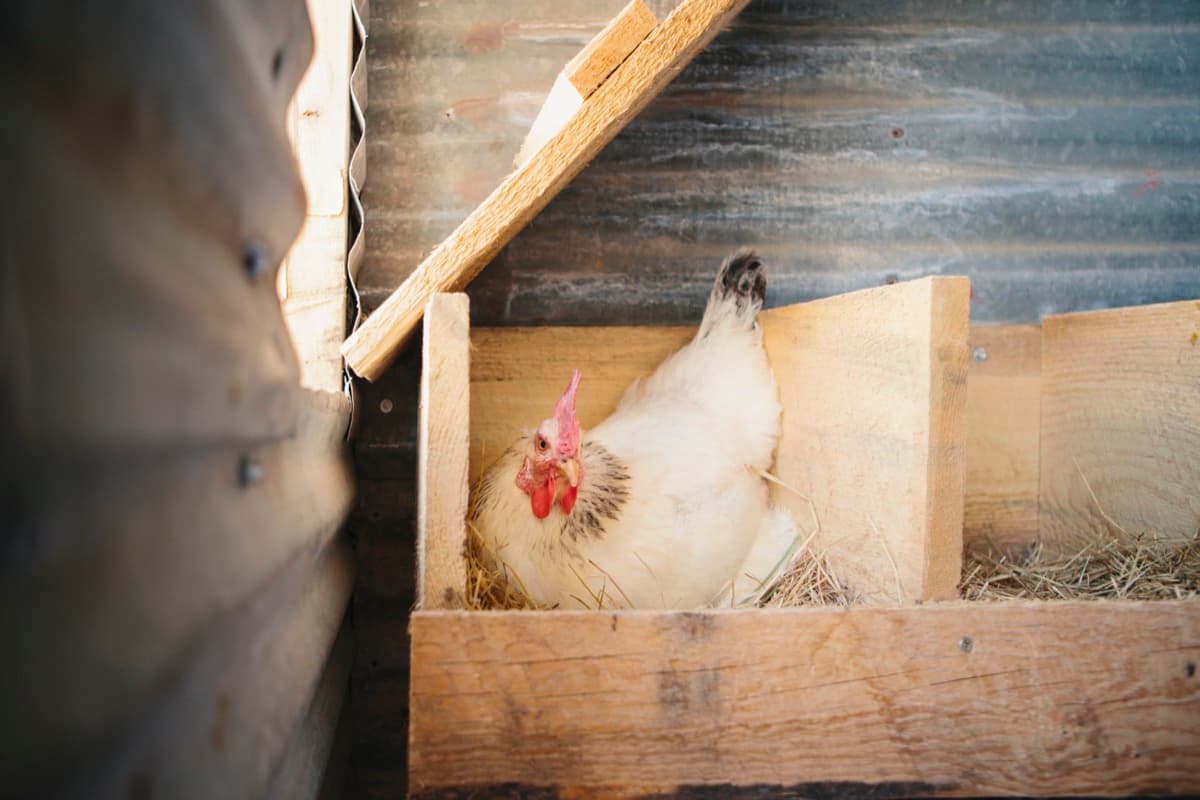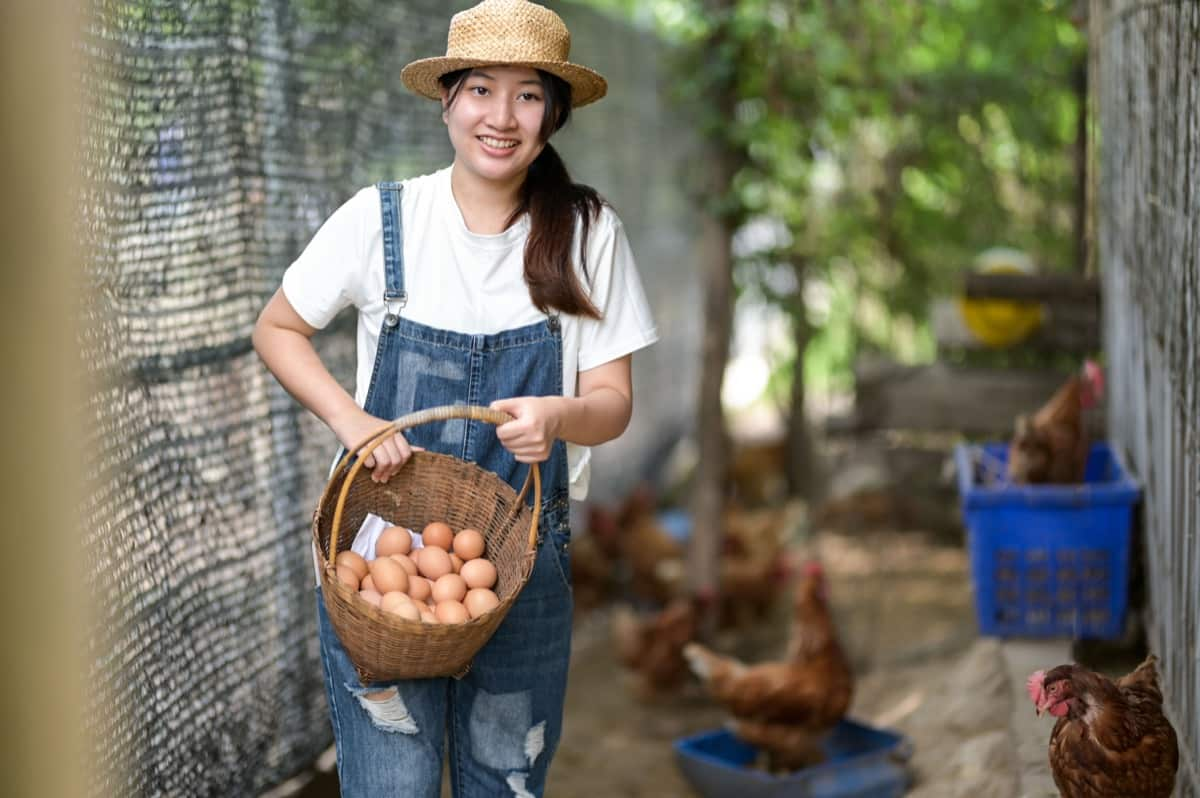When chickens have all their basic needs provided for them, they can lay eggs during the winter. It is not cruel to expect your chickens to produce eggs if they have everything they need during this period. Although your hens are exceptionally vigorous at laying eggs, you need to be aware that egg-laying is exceptionally vigorous for them. They suffer a lot if they lay eggs all year long. Your hens’ bodies can be damaged when forced to lay eggs for a long time without rest.

Best Way to Keep Chickens Laying Eggs During the Winter
Choose your Chicken Breeds Carefully
Some breeds are bred to lay well all year round. “Production breeds” such as Red Star and Golden Comet tend to lay regardless of temperature or day length. Therefore, if year-round eggs are important to you, these breeds are a good choice. You can choose from the following breeds to see if they lay better over the winter,
- Barred Plymouth Rock
- Buff Orpington
- Delaware
- Rhode Island Red
- Sussex
Prepare Your Chicken Coop for Winter
Take some steps to prepare your chicken coop for the winter and encourage egg laying if you already have one on your farm or backyard. If cold weather strikes early or mid-fall, take these steps to ensure the coop is ready. If you want to, you should,
- The bedding, roosting spots, and nest boxes should be cleaned, as well as the poop and debris. Hardware cloth should be used to plug mouse holes and re-bolt any loose boards.
- The coop will remain warmer if you add an extra thick layer of fresh bedding. Straw also stores air better than sand or shavings for insulation because it is hollow.
- Over hardware cloth or chicken wire coops, attach plexiglass or plastic sheeting. Ensure there is still room for ventilation, as chickens are more at risk from lack of ventilation than in colder climates.
Keeping Chickens Laying Eggs In Winter By Using Light
For hens to lay eggs during the winter, you need to keep them stimulated with light and warmth. The Plymouth Rock and Rhode Island Red breeds of hens require at least 12 hours of artificial lighting per day. In this scenario, you must use the correct light bulbs to simulate natural sunlight. You can typically keep your hens laying eggs all year round if you simulate 12 to 14 hours of daylight for them.
To Encourage Egg Production, Keep Your Chickens Warm
In addition to light, warm temperatures that simulate spring or summer can encourage egg production. You can encourage your hens to lay eggs in winter by providing a warm area protected from the elements. The temperature of chickens does not have to be high. In a cold climate, you’ll want to keep your coop mildly warmer throughout the winter to keep your chickens warm without shocking them.
Ensure Your Chickens Have Adequate Nutrition
To lay eggs, chickens need a great deal of energy and nutrients. Therefore, you should ensure your chickens eat a balanced diet if you want them to lay eggs in the winter. By feeding them layer feed that contains added protein or giving them treats such as sunflower seeds and nuts, you can add extra protein to their diets. As a result of their additional protein, they can get through the fall molting season and provide the energy they need to lay eggs and stay warm throughout the cold weather.
In case you missed it: 10 Reasons Why Your Chickens Stopped Laying Eggs: Solutions Provided

Calcium is another nutrient worth considering. To lay eggs, eggshells need this supplement to form strong shells and to contract. Calcium can be obtained from crushed oyster shells. Throughout the day, you should provide fresh water to your chickens. Keep it refilled throughout the day, and check it in the morning.
Feed With Sprouted Green Fodder
Sprout barley seeds by poking holes in an aluminum baking tray and spreading an even-thin layer of seeds. Water them daily, ensuring the excess water drains out of the holes (to prevent mold and mildew). Put them indoors in a warm, sunny location until they grow a four to five inches high thick lawn. By then, you’ll be able to peel chunks of fresh barley “sod” to feed your chickens daily.
You can also feed them a chunk of alfalfa hay each day instead of fresh green fodder, which provides many of the same benefits, though it may be less appealing to the birds. In recent years, small-scale animal fodder production has become increasingly popular, and for good reason. A sprouted seed grain sheds its protective enzymes and converts otherwise inedible starches into sugar. In addition to endearing your chickens to you, freshly sprouted fodder provides them with nutrients they would otherwise lack outside of the growing season.
Supply Adequate amount Of Fresh, Liquid Water
Egg production requires a lot of water, both in the metabolic process and in the egg itself. Chickens need access to fresh, liquid water to continue laying eggs. Although they are technically capable of surviving on an abundance of fluffy snow, they do not lay eggs when the only water source is snow. Although chickens eat snow to survive, it’s not in their best interests.
Fresh warm water should be brought in daily and placed six to eight inches above the ground to keep the water liquid. For those living off-grid in colder climates, heated water sources can be helpful but may not be practical. If possible, bring them small amounts of warm water several times a day, and soak some of their food in milk or water to give them a wet meal.
Add a Few Baby Chickens each Spring
The peak egg production in most breeds of chicken occurs between the ages of six and 18 months. Chickens take a break from laying to molt and replenish their feathers during the 18-24 months. The chickens will lay at a slightly lower rate for another year or two, and then their egg production will drop drastically.
You will need birds of staggered ages to ensure that some are laying at their peak while others are molting. Generally, chickens are ready to retire from egg-laying at three years of age. You will feed them the same ration for 1-2 eggs a week as your younger chickens for 5-6 eggs per week, regardless of whether they lay one or two eggs per week throughout their lifespan (often six to eight years).
In case you missed it: 10 Best Chicken Breeds For Producing Large Brown Eggs

Conclusion
While these guides can help chickens lay eggs in the winter, remember that these birds should rest and recover from molting. Let nature take its course when it comes to caring for your chickens.
- Ultimate Guide to Ossabaw Island Hog: Breeding, Raising, Diet, and Care
- Ultimate Guide to Juliana Pig: Raising Facts, Size, Diet, Care, and Lifespan
- Raising Lleyn Sheep: Disadvantages, Price, Uses, Characteristics, and Care
- Ultimate Guide to Meishan Pig: Breed Facts, Breeding, Raising, and Care
- Ultimate Guide to Teacup Pigs: Raising, Diet, Lifespan, Cost, and Care
- Guide to Raising Poll Dorset Sheep: Facts, Profile, Characteristics, Uses, and Care
- Ultimate Guide to Bighorn Sheep: Characteristics, Diet, Lifespan, Breeding, and Lifecycle
- Ultimate Guide to Raising Katahdin Sheep: Farming Facts, Breed Profile, Uses, and Care
- Ultimate Guide to Raising Oreo Cows: Belted Galloways Farming Facts, Profile, Uses, and Care